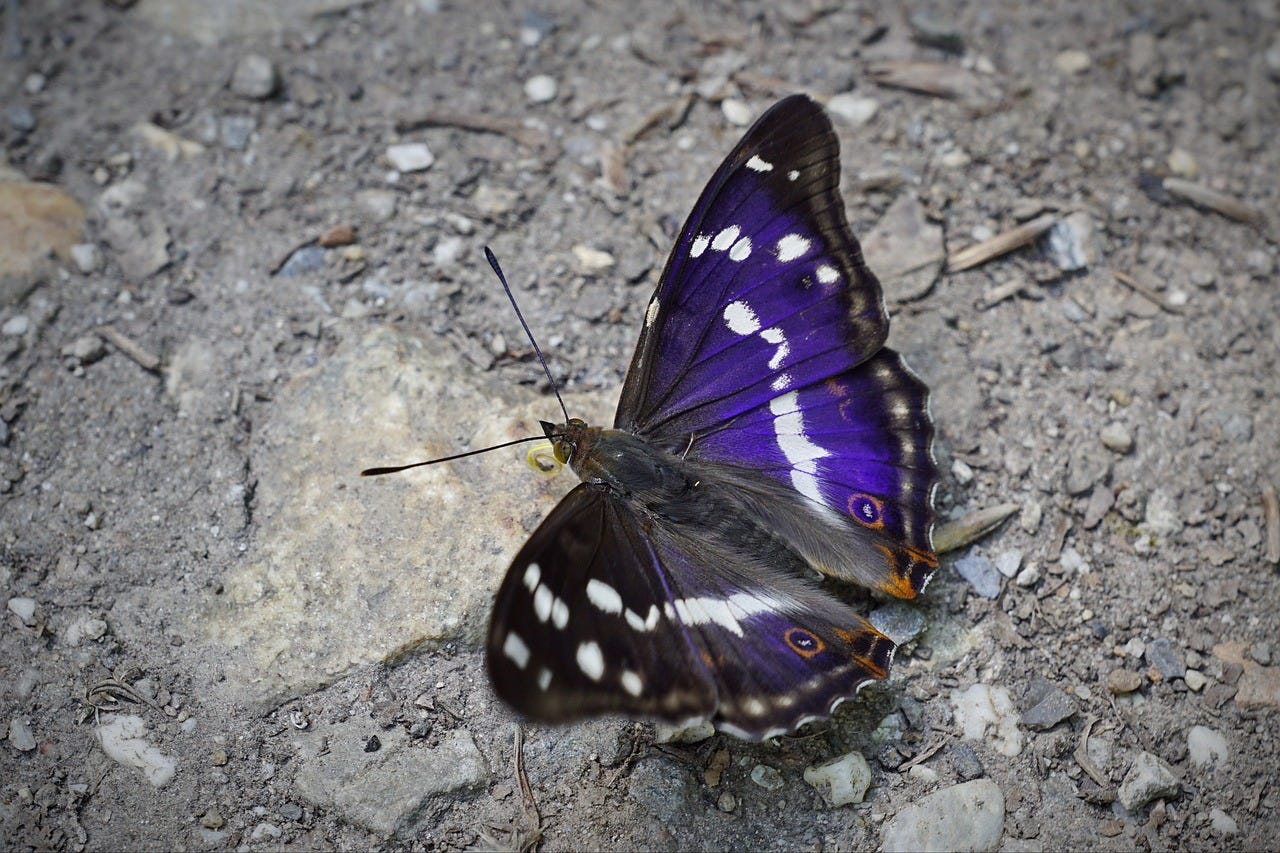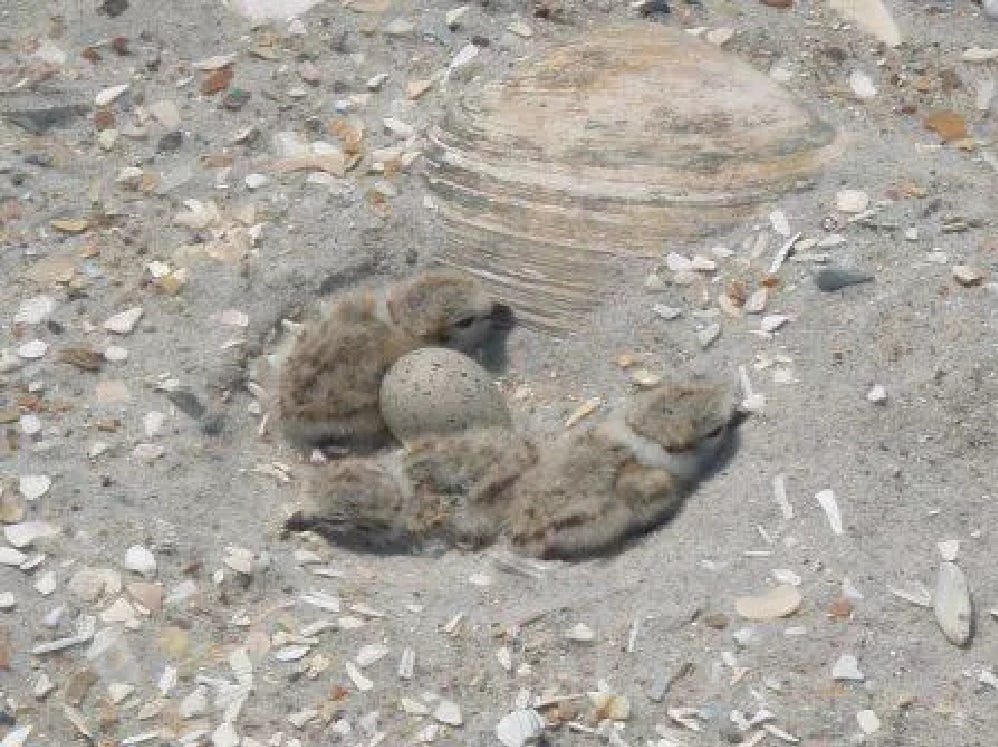Conservation takes a village
From butterflies to crocodiles to plovers, conservation succeeds when communities rally together.
Elusive purple emperor butterflies, which once roamed the vast ancient woodlands of England, have appeared for the first time in Derbyshire, home to Robin Hood legends, after communities rallied to plant goat willow to welcome them.
Across the world, in Cambodia, the largest wild nest of endangered Siamese crocodiles has hatched since conservation efforts began decades ago, thanks to a partnership between Flora & Fauna and the local Chorng people, who hold the crocodiles sacred.
On the shores of Lake Michigan in the U.S., thousands of fans are over the moon after four pairs of endangered piping plovers nested on a beach in Chicago, Illinois, causing the local media to declare a state of “piping plover fever.”
When a pair of plovers first arrived at the beach in 2019, a legion of volunteers, park employees and scientists installed fencing and began round-the-clock monitoring to protect the birds from accidental human or pet interference.

These are this week’s examples of species gaining ground due to community involvement. Each and every day, millions of people are claiming their square of this planet and fighting for it, resulting in species rebounding, forests recovering, and water and air becoming cleaner.
“If you give them the right protection, they will bounce back.”
— Iri Gill, a manager at the Chester Zoo in Britain, told The New York Times in reference to Siamese crocodiles.
Butterfly royalty
The purple emperor is not endangered. It’s found all over Europe. However, it is rare in England, where woodlands have been decimated over the last several hundred years to make way for agriculture. People in Derbyshire simply wanted to see more of this iconic insect.
Many butterfly species prefer a specific host plant on which to lay their eggs. If the plant isn’t around, the butterflies won’t be either. Purple emperor caterpillars almost exclusively eat goat willow, so volunteers planted more than 500 of the trees in parks and forests across Derbyshire. Encouraging the purple emperor northward expands its current range, possibly helping it grow more resilient to climate change.
But really, why should we care about butterflies, except for the fact that there’s no simpler symbol of Earth’s fragility, beauty and resilience? Do we need a reason other than the pure delight they bring us?
Yes, we do.
Indicators of ecosystem health: Butterflies are fragile, and their abundance indicates healthy habitat and lack of pollution. Where butterflies roam, so do other bugs.
Food webs: Butterflies feed birds, fish, bats, spiders, reptiles and other insects like praying mantises.
Educational value: Metamorphoses is often the first science lesson for schoolchildren worldwide.
Scientific value: Here I’ll quote directly from Butterfly Conservation:
“Butterflies (and moths to a lesser extent) are an extremely important group of ‘model’ organisms used, for centuries, to investigate many areas of biological research, including such diverse fields as navigation, pest control, embryology, mimicry, evolution, genetics, population dynamics and biodiversity conservation.”
I’ll insert another butterfly picture now because, yeah, science is cool, but we aren’t really thinking about that when butterflies make us smile. What are we delighting in?

A “less aggressive” crocodile
Chorng community members in Cambodia were hired as game wardens to protect Siamese crocodiles from poachers. These crocs are smaller, less aggressive, and do not attack people in rivers.
“The community is really happy about the presence of the crocodiles,” said Sim Khmao, a community warden. “They are not afraid of the crocodiles. They understand them, Siamese crocodiles, because they have been here since our ancestors’ period.”
Crocodile skin is still used in fashion items like boots and bags. Crocodile oil is used in Chinese medicine. Siamese crocodiles are found in farms across Asia, often hybridized with larger species. But only an estimated 250 remain in the wild in Cambodia. Small populations have also been discovered in Laos and Borneo.
“The community members already protecting the sites is key to why this program works,” Pablo Sinovas, country director with Flora & Fauna, told The New York Times.
Plover lovers
As the Chicago Sun-Times recently reported, excitement about piping plovers exploded this season. Birders have arrived from all over the world to witness the adorable chicks and hear the adults’ bell-like calls. Plover mating drama makes great storytelling. (One year, a female mated, hatched and fledged chicks, then began her migration, only to stop and make another family with a different male along the way.)
Piping plovers, which can fit in the palm of a hand, were once hunted for their downy feathers to make hats until the Migratory Bird Treat Act of 1918 provided protection. Habitat loss due to development and recreation caused Great Lakes Piping Plover numbers to plummet to just 13 breeding pairs by 1990. Now, thanks to restoration and human protection along both private and heavily-used public beaches, 81 breeding pairs returned to Great Lakes beaches this season, braving dogs, humans, birds of prey, trash and windy weather.
While it might seem insane to lay your eggs among a few rocks on a beach, plovers have developed adaptations that aid their survival in this niche.
Adults frequently feign injury to lure predators away from their chicks.
Chicks can walk and eat within a few hours of hatching.
Eggs and plumage are perfectly camouflaged on sandy beaches to avoid catching the eyes of predators.
Key ways communities helped the piping plover:
Habitat protection: Since plovers nest on the ground, they are easily crushed underfoot. Dunes and beaches that receive a little fencing go a long way.
Reintroduction: A captive-bred chick was among the pairs that nested at Montrose Beach in Chicago.
Public education: Volunteers and signs help the public, especially dog owners, understand the birds and steer clear.
After communities erected fences around the dunes to protect plovers near Chicago, willets, whimbrels, avocets, and burrowing owls also returned, according to the Sun-Times.
“...if I were required to name a sound, the remembrance of which most perfectly revives the impression which the beach has made, it would be the dreary peep of the piping plover which haunts there"
— Henry David Thoreau
What’s sacred to your community?
Which species or corners of nature are sacred in your culture? What are your communities doing to protect it?
Wondering how to participate?
One of this newsletter’s driving motivations is to inspire people to “claim your square” of this Earth through volunteerism, advocacy, fundraising, and hands-on restoration. In doing so, you’ll join millions of people worldwide who are fighting to save ecosystems.
Consider a donation to help conserve butterflies in the UK (no affiliation with this publication).
Donate to Flora & Fauna to help them conserve Siamese crocodiles (no affiliation with this publication).
Join a bird monitoring effort near you (US Audubon Society, no affiliation with this publication).
Research endangered species near you and find out how you can help.
Host a plant that helps a butterfly! Ask your local nursery what they’re eating in your neighborhood. If you plant it, they will come!
I don’t have time for grief, anger or fear. I’m not a denier or doubter. I’m just an Earth Hoper.







Yes im in. On my square I've started a pollinator garden. Seeds will be saved and another pollinator garden is planned for next spring.
I so appreciate your commitment to conservation and am glad you’re on Substack. Your stories of success, of positive intervention, are inspiring. Thank you!